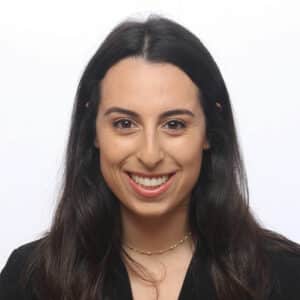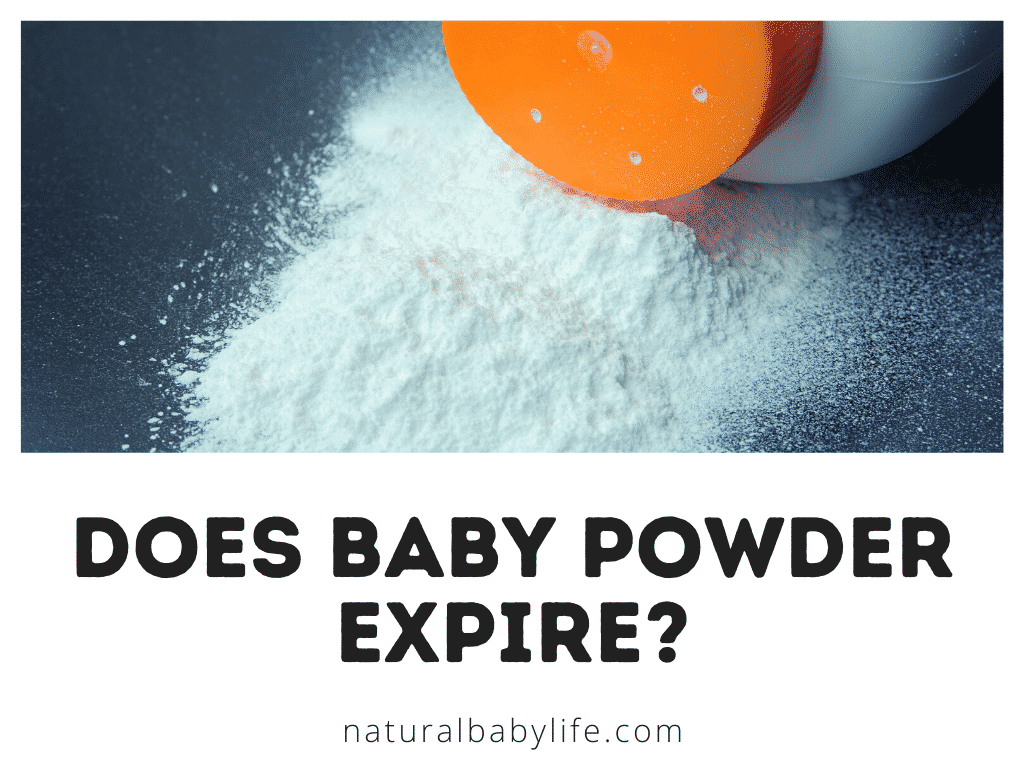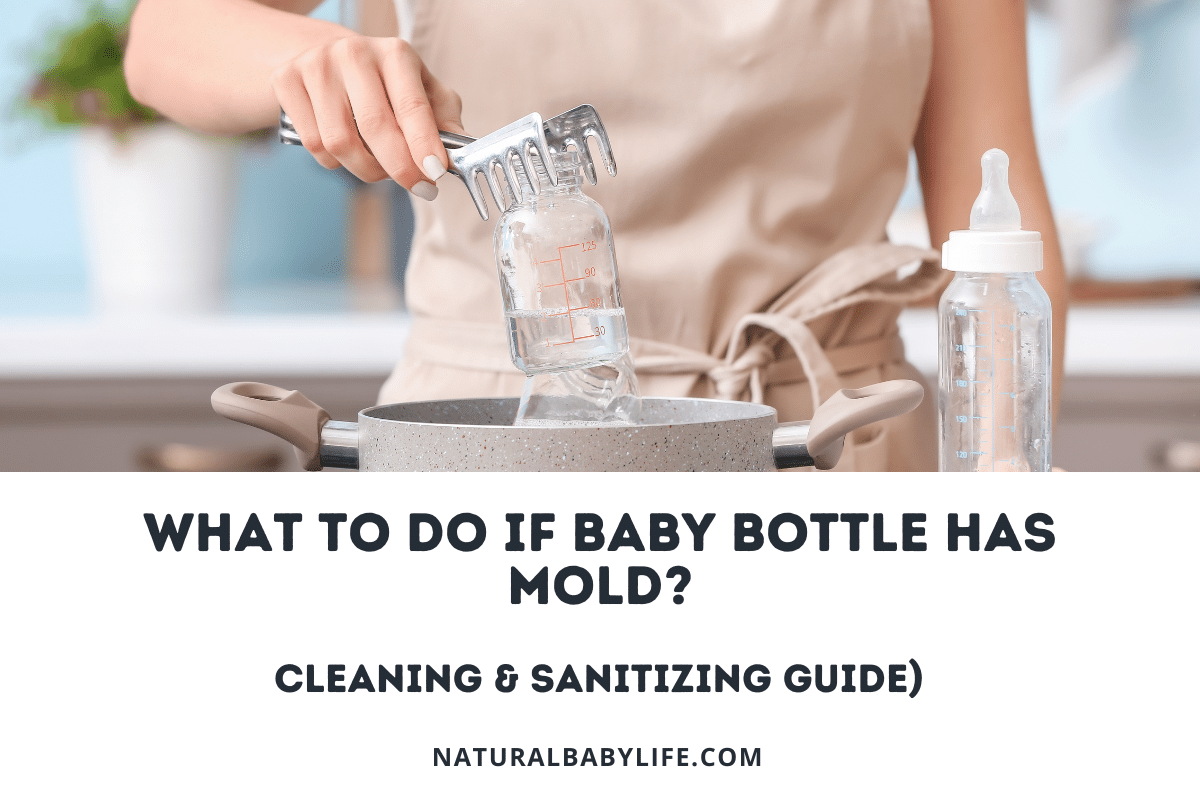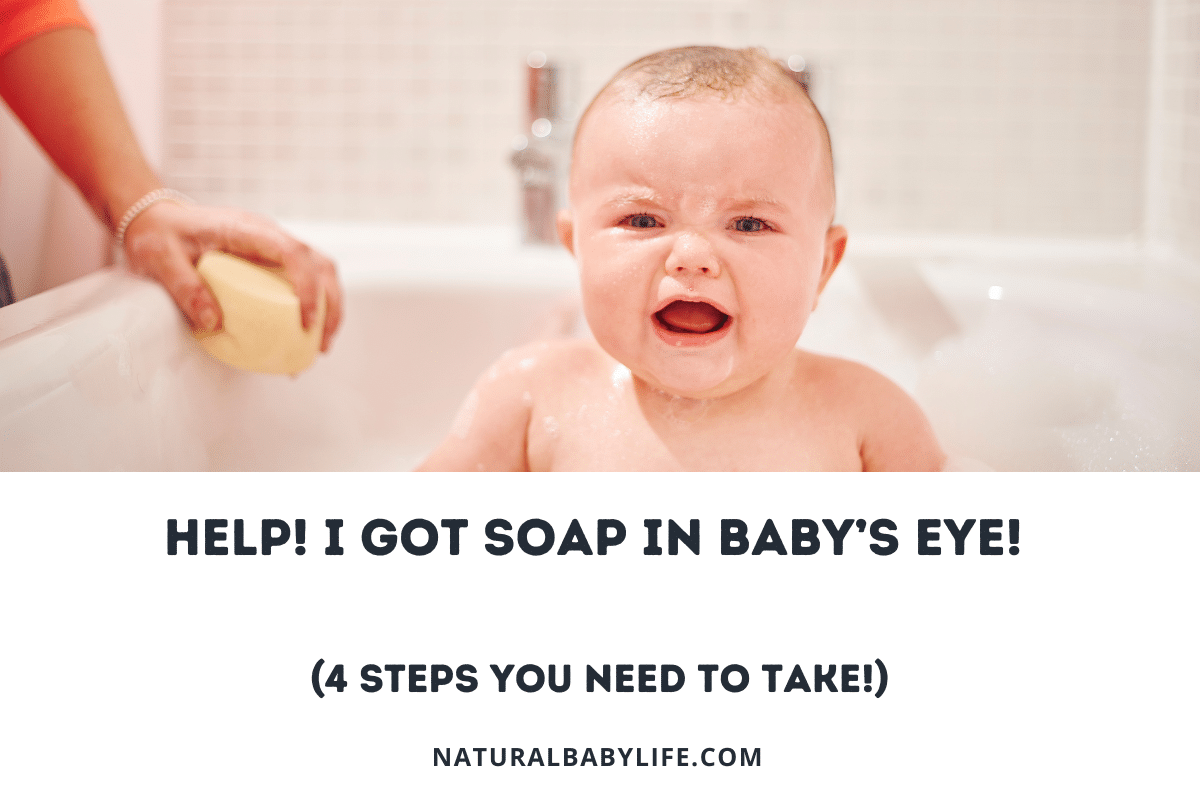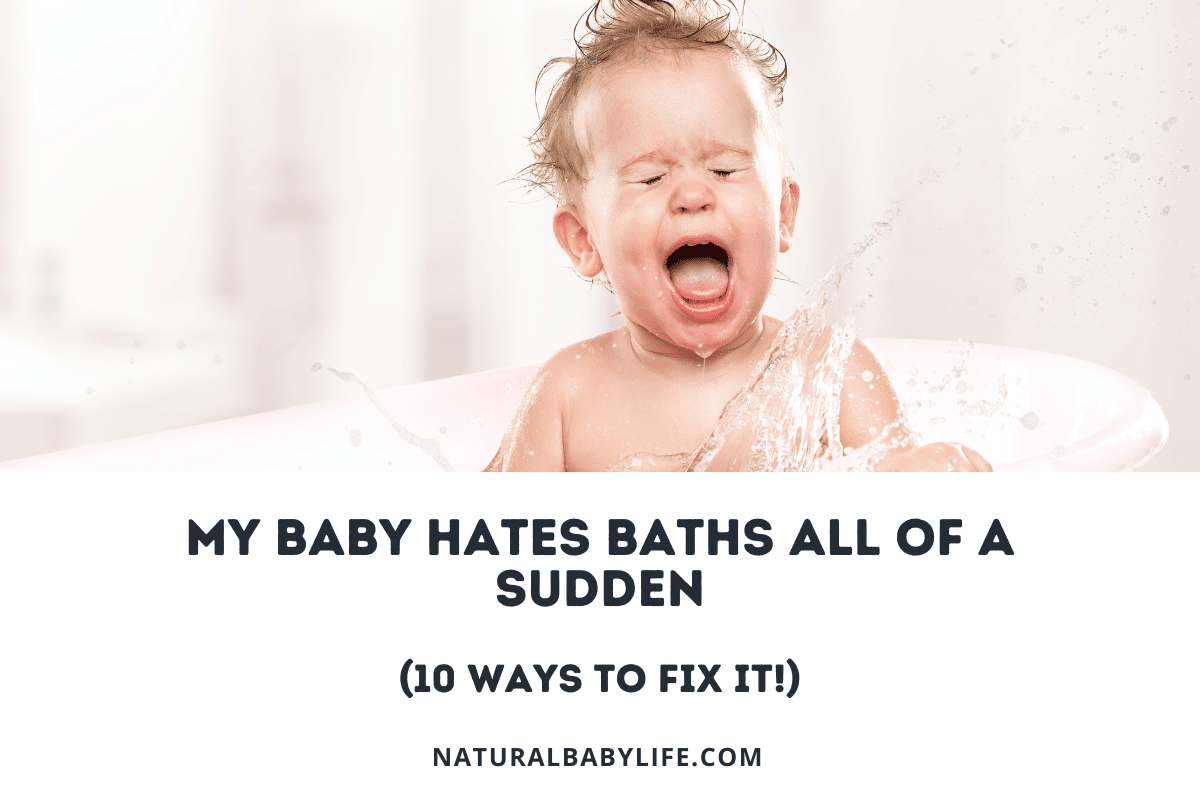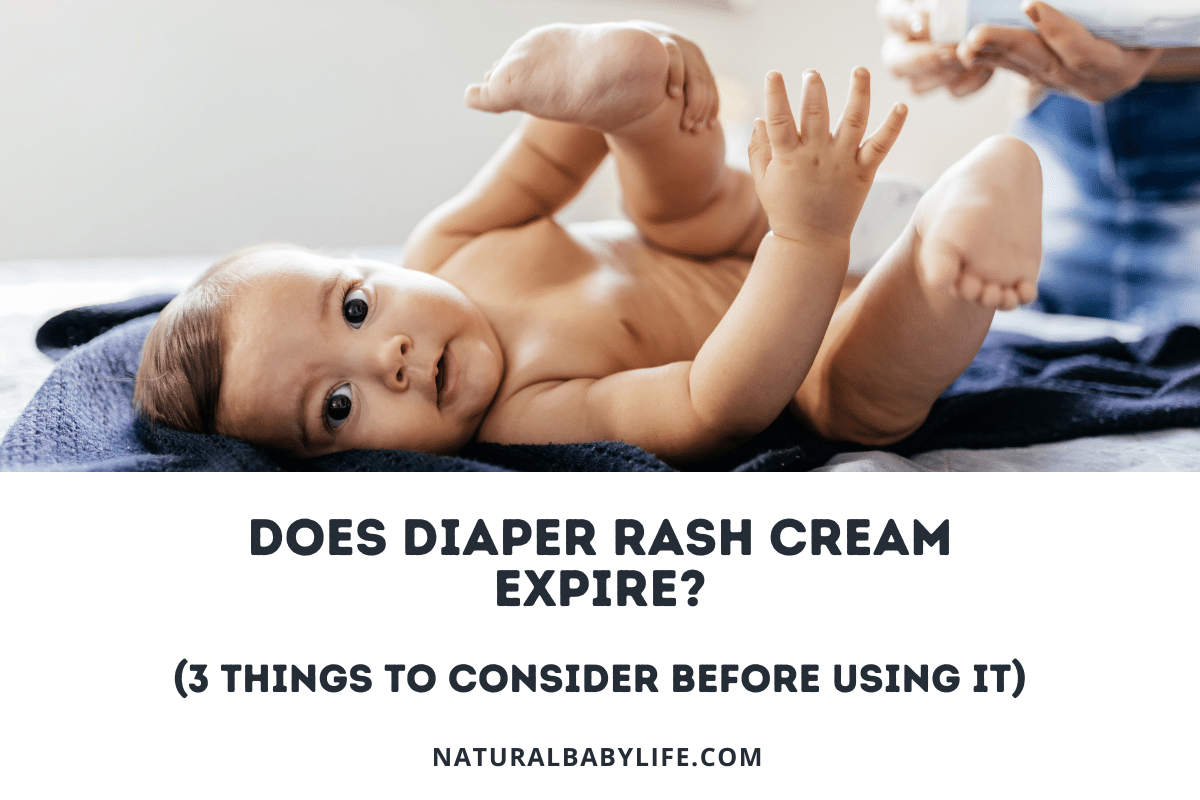You know that babies can be stinky, but you probably expected stinky diapers, not heads. Have you asked yourself, “Why does my baby’s head stink?” Here’s what could be going on.
When a baby’s head or hair smells bad it is most often caused by cradle cap (seborrheic dermatitis). The smell is often accompanied by flaky patches of yellow scaly skin and occasionally some redness. Cradle cap is very common, easily treated at home, and can be prevented with the proper care.
Nobody wants to see their little baby in discomfort and ignoring cradle cap usually makes it worse and can even cause it to spread. Let’s learn more about what cradle cap is, why it makes your baby’s head stinky, how to treat it, and how to prevent it.
Table of Contents
Why does my baby’s head stink?
We’ll discuss a few other reasons why your baby’s head might be stinky at the end, but I want to focus on cradle cap because it is the most likely culprit.
According to a study at The University of Melbourne, about 10 percent of all children from birth to age 5 experienced some form of seborrheic dermatitis (cradle cap).
So take comfort in the fact that your baby doesn’t have some totally crazy skin problem – it’s a well-known issue.
Your baby is most likely to have problems with cradle cap within the first three months of life because their body is still dealing with dramatic hormone changes and physical development.
After three months, the chance of developing it drops quickly until the age of one. After your baby’s first birthday, there is little chance that you’ll have to worry about this problem.
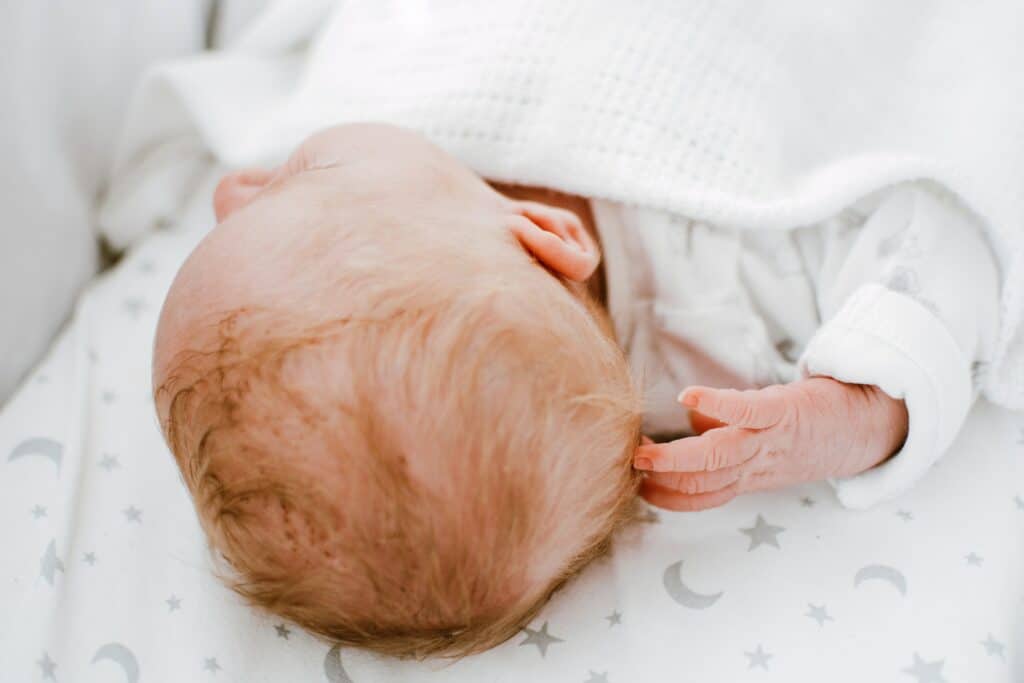
The symptoms of cradle cap
If your baby has a smelly head, it’s just one of many symptoms that you are likely to encounter with cradle cap. Fortunately, many of the symptoms are distinct visual cues that will help you make the right diagnosis.
The vast majority of cases are going to be mild, but watch out if you see some of the more severe signs. Getting to work on it early is best!
Common symptoms of cradle cap:
- Flaky, dandruff-like dead skin
- Patches of yellow, scaly skin
- Minor redness or signs of irritation
- Yellow rash
- Musty scent
Symptoms of severe cradle cap:
- Large or continuous patches of scaly skin
- Scaly patches spread to the forehead, eyebrows, face, or ears
- Redness or signs of irritation
- Hair loss
While these are the most common symptoms, there could be others as well. While you might think that the rash looks itchy, most cases are not, and, in fact, your baby probably isn’t in much discomfort!
But what does cradle cap smell like? While a few people think cradle cap smells like feet, more liken it to the smell of a sweaty men’s hat.
When to see a doctor:
- There is a yeasty smell in addition to oily. This indicates a yeast infection is developing and you’ll need antifungal medication.
- Your baby is scratching her head or rubbing it on anything nearby. This indicates itchiness which means a more severe case of cradle cap or perhaps a different kind of fungal or bacterial infection.
What causes cradle cap?
This rash is caused by extra oil buildup on your baby’s head. The medical community isn’t exactly sure why this extra oil gets produced, but it could be related to the mother’s hormones or just natural development.
Essentially, your skin is covered with sebaceous glands (especially around areas of hair growth such as the scalp) which produce an oily substance called sebum. If your baby’s glands become overactive then they will produce too much sebum.
Too much sebum can prevent the natural process of skin dying off and falling off of the scalp – it just stays stuck on. When this happens too often, it results in the cradle cap rash.
Is cradle cap an allergic reaction?
It’s true that severe cradle cap could be an early warning sign for eczema down the road, but there is not a direct link between the two.
An allergic reaction would involve an immune response from your baby to some outside agent. Cradle cap, meanwhile, is simply related to oil glands and hygiene.
Where does cradle cap appear?
While the top of the head is the most common place to find cradle cap (hence the name!), it’s not the only place.
Any part of the skin can develop this rash if the dead skin isn’t cleaned away and is allowed to build up. The most common places to find it other than the head are the eyebrows, face, or behind the ears.
I know that in my personal experience, these areas can get neglected during bathtime because we don’t want to get soap in our baby’s eyes so we unconsciously avoid it. To get around this, be sure to at least use warm water on these areas!
Is cradle cap contagious?
Don’t worry, it might look scary but cradle cap isn’t contagious in any way, shape, or form. Most parents will be able to spot what’s happening with your baby’s head, but don’t be afraid to explain to others what is going on if you feel the need.
How to treat cradle cap and seborrheic dermatitis
Treating cradle cap is pretty straightforward. The goal is to break up the scaly skin and remove it from the scalp. This will relieve the irritation on the skin underneath the scales and allow it to heal.
Here are the most common steps for treating cradle cap:
- Apply a small amount of oil (coconut, olive, or baby oil) to your baby’s scalp and other affected areas, and give it time to soften the scaly and dead skin. If necessary, you can leave it in as an overnight treatment.
- After the oil has loosened the skin, run a soft brush or a special cradle cap comb through your baby’s hair to break up the dead skin.
- Put your baby in the bath and lather a mild shampoo in your baby’s hair.
- Using the same soft brush or cradle cap comb, continue to brush through her hair and rinse out all of the oil and dead skin.
- Continue the treatment each day for as long as necessary. You should see an improvement after each treatment.
While you don’t necessarily need any special tools or soaps to treat cradle cap, we had great success with a few products on the market today that helped speed things along nicely.
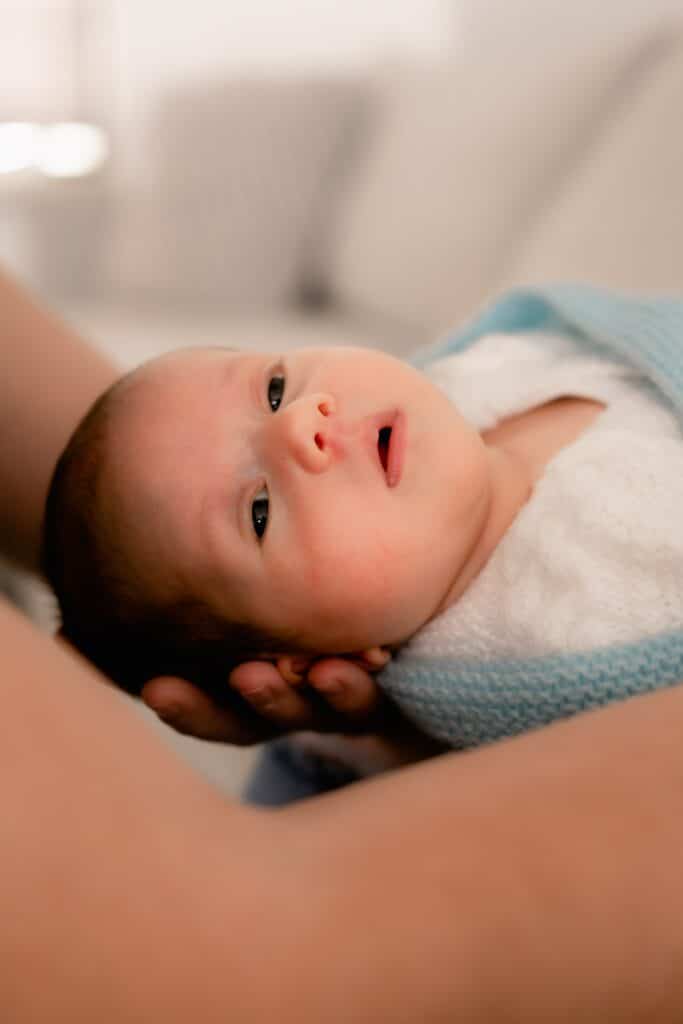
The best cradle cap comb
While I’m generally pretty tight with money, I don’t mind buying something if it does its job well and proves its worth. In this case, we tried out the DermaFrida system with our son because we trust the Fridababy brand and we’ve always had great success with their products.
With the DermaFrida, you’ll get a 3-step system that helps during every part of the cradle cap treatment process.
You’ll get one of each:
- foam pad to help lather in the soap
- soft brush to loosen up the dead skin
- fine-toothed comb to help lift it away
- BRUSH OFF DRY SKIN, CRADLE CAP AND ECZEMA: With 100% silicone brush
- SAYONARA SMELLY WASHCLOTHS: This easy to clean silicone bath brush is the perfect replacement to the washcloth
Prices pulled from the Amazon Product Advertising API on:
Product prices and availability are accurate as of the date/time indicated and are subject to change. Any price and availability information displayed on [relevant Amazon Site(s), as applicable] at the time of purchase will apply to the purchase of this product.
The best cradle cap balm
We didn’t use any kind of special shampoo with our son when he had cradle cap, but we did pick up a cradle cap balm that we used on his head overnight before we started tackling the dead skin in the bath.
Balms are a great option because they won’t be as messy as using oil by itself and they include lots of different ingredients to help get the job done. They also last forever!
If you are having trouble getting the oil or balm out of your baby’s hair or you made a mess while you were using it then check out my resource on getting baby oil out of anything in the house!
What to avoid when treating cradle cap
While it could be tempting to throw everything but the kitchen sink at your baby’s head to get the cradle cap gone ASAP, don’t forget that her skin is still new and sensitive.
If you try to use harsher methods such as vinegar, hydrogen peroxide, or concentrated essential oils on her skin you risk making the problem worse, not better.
If the situation is bad enough, a doctor might recommend that you try a medicated dandruff shampoo (like this one which is made for babies!) or even an antifungal cream if a yeast infection has developed.
- Many people refer to seborrheic dermatitis as “cradle cap.” Pediatricians regularly recommend adult dandruff shampoos for this condition because they contain an active ingredient to control seborrheic dermatitis and dandruff. Until now there was no children’s seborrheic dermatitis shampoo and body wash.
- Happy Cappy is the first OTC (Over The Counter) shampoo and body wash made specifically for children of all ages with active ingredient, pyrithione zinc, which has been proven safe and effective for many decades for relief of dandruff and seborrheic dermatitis.
Prices pulled from the Amazon Product Advertising API on:
Product prices and availability are accurate as of the date/time indicated and are subject to change. Any price and availability information displayed on [relevant Amazon Site(s), as applicable] at the time of purchase will apply to the purchase of this product.
In my experience, try the simplest and least invasive method first (soaking and washing your baby’s head) before you move on to more extreme measures!
How long does cradle cap last?
With proper treatment, you should be able to get rid of your baby’s cradle cap in anywhere from a few days to two weeks. Obviously, the more severe cases will take longer and mild symptoms will resolve quickly.
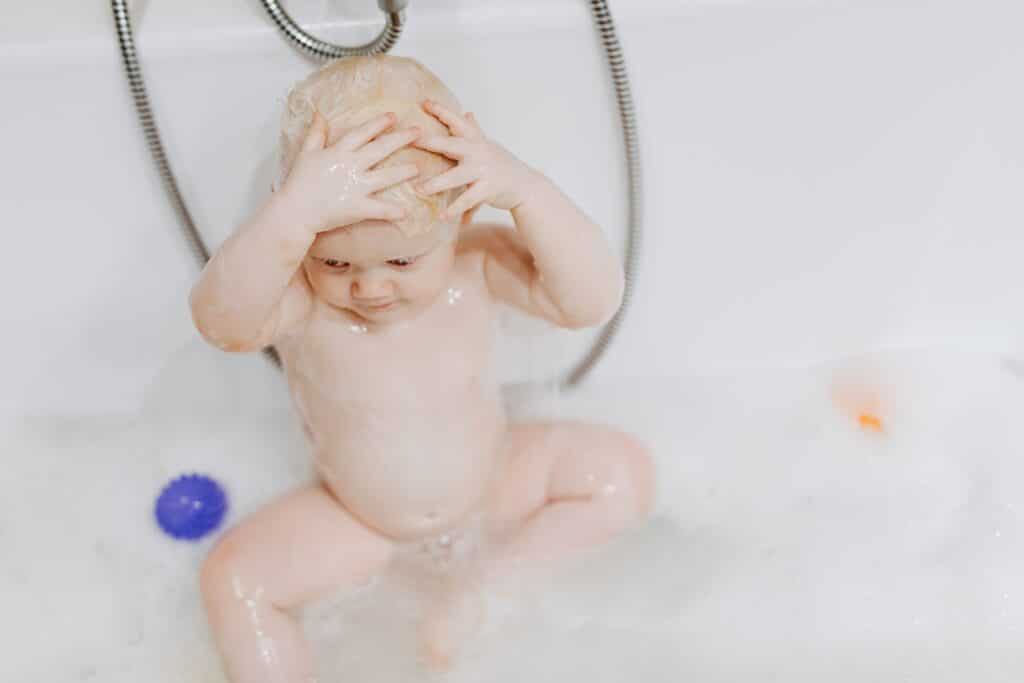
How to prevent cradle cap
Fortunately, preventing cradle cap is even easier than treating it!
The easiest and best recommendation is just to bathe your baby regularly and don’t allow oil to build up on her head.
Use a mild shampoo and gently scrub her head during bathtime with a washcloth or soft brush. Then rinse thoroughly.
That’s it!
If you see signs that the cradle cap is coming back, even with routine bathing, then don’t be afraid to apply some of the balm before bed or even just a few hours before bathtime. The natural oils and vitamin E will help the skin stay healthy and vibrant.
Other culprits behind a stinky baby head
While cradle cap is the most common cause, infrequent hair washing is the other major cause.
Doctors drill into parents not to bathe newborns too frequently, so it’s natural that you’re not washing their hair as much easier. If your baby sweats a lot or spits up, those body odors linger.
Finally, that smell you notice might be unusual but not necessarily stinky. That’s because infant head odors are likely an important part of the mother and baby bond.
Obviously, nature doesn’t want to repel the mother with a bad smell, but if you notice that your baby’s head smells unusual, it could just be you noticing the new and unique smell of your baby!
Conclusion
Most parents typically love that unique scent of a new baby’s head. If you’re noticing something less pleasant, it may be cradle cap or a fungal infection. You can definitely bring it to the doctor’s attention at your next well-baby check.


